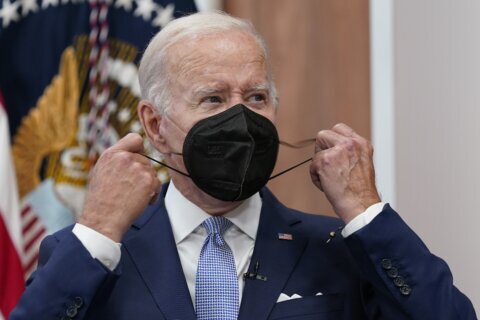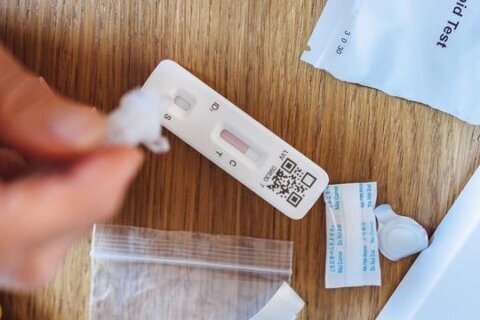More than a year ago, reports began circulating about a mysterious new illness in the central Chinese city of Wuhan. It seemed like a world away, and it was — at first.
That all changed March 5, 2020, when Maryland authorities announced the first confirmed cases of the novel coronavirus in the D.C. region: Three residents of Montgomery County, Maryland, who had recently vacationed on a Nile River cruise.
Soon, D.C. and Virginia were also reporting cases, too. Then deaths. And life in the D.C. region — and around the world — was upended: Restaurants closed. Stay-at-home orders were issued. Mask mandates went into effect.
Below is a timeline of some key developments as COVID-19 swept through the region.

DECEMBER 2019
Reports first emerge of a mysterious pneumonia-like illness linked to an outdoor food market in the Chinese city of Wuhan.
JAN. 9, 2020
Doctors and scientists studying the illness determine the viral pneumonia is caused by a new type of coronavirus, according to reports in Chinese state media.
At that time, 59 people had contracted the illness, local authorities said. Later that month, the entire province is locked down. The lockdown would last 76 days.
JAN. 26, 2020
The U.S. confirms the first known cases of the new coronavirus in the country: five cases in Washington state, all among people who traveled to the Chinese city at the center of the outbreak.

JAN. 27, 2020
Maryland and Virginia saw the first people in the D.C. area tested for the new coronavirus. Those tested included a Maryland resident and a George Mason University student. However, the results came back negative.
For the new few weeks, health departments in D.C., Maryland and Virginia reported a trickle of new test results — all negative.
JAN. 30, 2020
The World Health Organization declares the outbreak a global emergency after the number of cases worldwide spikes more than tenfold in a week.
JAN. 31, 2020
The U.S. declared a public health emergency.
President Donald Trump signed an order that temporarily barred from the U.S. foreign nationals, other than immediate family of U.S. citizens and permanent residents, who have traveled in China within the last 14 days.

FEB. 11, 2020
The WHO gave the disease caused by the novel coronavirus a name: COVID-19.
FEB. 29, 2020
The U.S. recorded its first coronavirus death: a man in his 50s at a long-term care facility in Washington state.
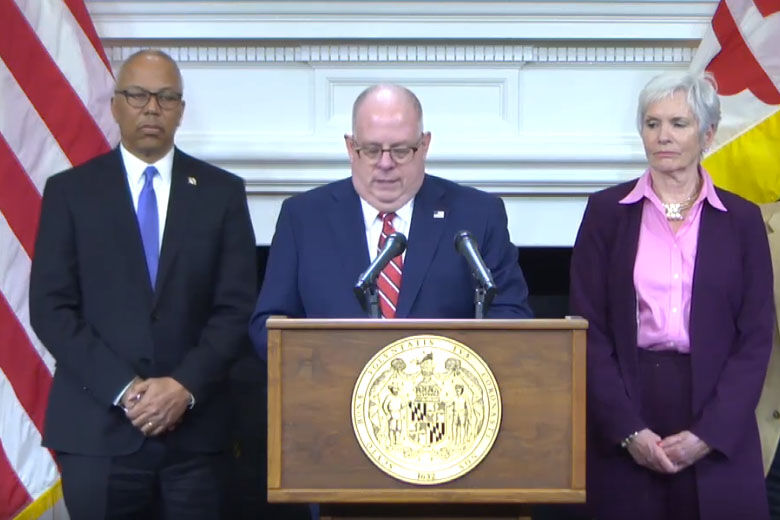
MARCH 5, 2020
Maryland Gov. Larry Hogan announced three people in Maryland, all in Montgomery County, had tested positive for the virus — the first three known cases in the D.C. region. The first cases in the state included a married couple in their 70s and a woman in her 50s who had returned from a cruise along the Nile River.
Hogan announced a state of emergency.
MARCH 7, 2020
Two days later, D.C. Mayor Muriel Bowser announced the first known coronavirus case in the District. The Rev. Timothy Cole, the rector of Georgetown Christ Church, had recently traveled to Kentucky for a church conference. Several other parishioners would later test positive amid a burgeoning outbreak.
That same day, Virginia also recorded its first case: a U.S. Marine stationed at Fort Belvoir.

MARCH 11, 2020
D.C.’s Mayor Bowser declared a public health emergency and urged all large gatherings planned in the District to be postponed or canceled. At the time, there were 10 confirmed coronavirus cases in D.C. — and more than two dozen in the broader D.C. region.
Health officials said there was evidence that community transmission of the coronavirus was occurring.
It was also on this date the WHO first characterized COVID-19 as a pandemic.
MARCH 12, 2020
In a dramatic announcement, Maryland Gov. Hogan issued an order banning all large gatherings of people and activated the National Guard, while the state superintendent of education ordered all public schools in the state to close for two weeks.
Hogan’s announcement came after officials announced the first known case of a patient being infected with coronavirus through what’s known as community transmission.
That same day, Virginia Gov. Ralph Northam also declared a state of emergency.

MARCH 13, 2020
Following Maryland’s move closing schools for two weeks, D.C. and Virginia announced schools would be closed through the end of March.
D.C.’s Bowser also issued a new order banning gatherings of 250 people or more in response to the spread of the virus. The mayor’s previous measure had been only a recommendation. The threshold would later be lowered to 10 people, in line with CDC guidance.
That same day, speaking from the White House, Trump declared a national emergency.
MARCH 14, 2020
The region marked a sad milestone: the first coronavirus death in D.C., Maryland or Virginia.
Health officials said they weren’t sure how the James City County, Virginia, man in his 70s had contracted the virus, and they suspected the virus was spreading in the community.

MARCH 16, 2020
D.C.’s Bowser ordered all bars and restaurants in the District to operate as carryout and delivery only. In addition to restaurants, the D.C. Health Department said movie theaters, health clubs, spas, massage parlors and other large businesses also need to close.
Maryland’s Hogan issued a similar order.
The number of coronavirus cases around the region continued to climb, reaching more than 100.
At a White House briefing that day, Trump and members of his Coronavirus Task Force called on Americans to practice social distancing and to avoid gatherings for the next 14 days.
MARCH 17, 2020
Following the moves by Maryland and D.C. to close restaurant dining rooms and movie theaters, Virginia’s Northam issued an order enforcing a 10-person limit in restaurants and other businesses. He would later order entertainment venues closed entirely.
MARCH 18, 2020
Maryland marked its first coronavirus death: A Prince George’s County man his 60s with an underlying medical condition.
At the time there were about 200 coronavirus cases in D.C., Maryland and Virginia.

MARCH 19, 2020
In a further clampdown on public gatherings, Maryland’s Hogan ordered all shopping malls and entertainment venues in the state to close. He also issued an order lowering the threshold on gatherings to 10 people or less, and promised it would be enforced by law enforcement.
Elsewhere, Italy overtook China as the country with the most coronavirus-related deaths at the time — more than 3,400 — and the governor of California issued a statewide order for people to stay home.
MARCH 20, 2020
In addition, Bowser extended her order banning dine-in services at restaurants and requiring them to operate on a takeout or delivery-only capacity through most of April.
That same day, D.C. also recorded its first death from COVID-19: a 59-year-old man.
In New York, which was soon to become the initial U.S. epicenter of the pandemic, the governor issued a “shelter-in-place” order, directing residents to stay home.

MARCH 23, 2020
In another whirlwind of official pronouncements, Maryland’s Hogan ordered nonessential businesses in the state to close, and Virginia’s Northam ordered all public schools to keep their doors closed through the end of the academic year.
In D.C., Bowser ordered the National Guard and D.C. police to block roads near the National Mall and the Tidal Basin in an attempt to limit large crowds visiting the cherry blossoms.
Earlier that month, organizers of the National Cherry Blossom Festival, usually one of the District’s marquee spring events, canceled most of the festivities.
At the time, the number of coronavirus cases in the region had climbed to more than 650 and the number of deaths stood at 11.
MARCH 24, 2020
Following Maryland’s earlier move, D.C.’s Bowser ordered nonessential businesses, such as salons, barbershops and clothing stores, in the city to close.
The Metro transit system, which had already announced service reductions, announced it was closing more than a dozen rail stations indefinitely. Ridership had fallen by 90% as many workers around the region worked from home.
By that point, the region recorded more than 800 coronavirus cases and 13 deaths.

MARCH 27, 2020
Congress passed and Trump quickly signed an unprecedented $2.2 trillion economic rescue package into law, known as the The Coronavirus Aid, Relief, and Economic Security Act or CARES Act.
The measure included an extra $600 a week in unemployment benefits for out-of-work Americans, provided loans to keep small business afloat and a plan to send stimulus checks to millions of Americans.
Nationwide, the number of coronavirus infections surged past 100,000 and the number of deaths topped 1,500.
In D.C., Maryland and Virginia, the number of coronavirus cases hit nearly 1,700 and the number of lives lot stood at 22.
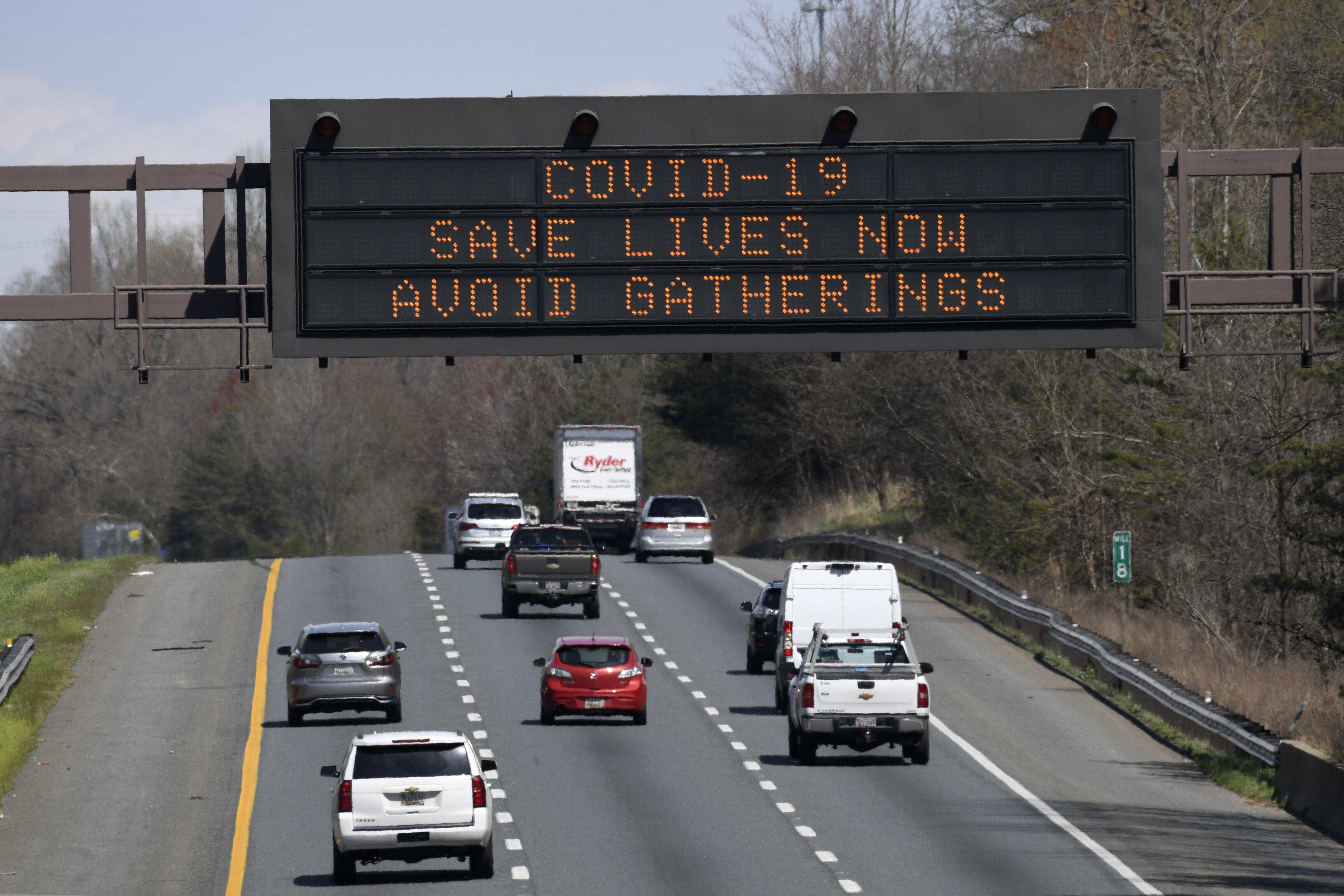
MARCH 30, 2020
In the most significant step taken to fight the spread of the virus, the leaders of Maryland, D.C. and Virginia issued formal “stay-at-home orders.”
All three orders were similar, directing residents to stay in their homes except for trips to the grocery store, to get medical care, going to essential work and outside recreation as long as social distancing guidelines were followed.
In all three jurisdictions, restaurants were allowed to stay open, offering takeout and delivery service.
The total number of coronavirus cases in D.C., Maryland, and Virginia hit more than 2,900, with 39 deaths.
APRIL 3, 2020
Officials in D.C. unveiled a model of projected coronavirus infections that estimated up to 93,000 total infections in the District and deaths at anywhere from 225 to 1,000. While total infections a year into the pandemic would only less than half the amount predicted, deaths would exceed even the grimmest projections.
Meanwhile, the White House Coronavirus Task Force unveiled a new recommendation from the CDC: Americans should cover their faces with a cloth mask or other face covering when leaving the house, especially in places such as grocery stores where practicing social distancing is difficult.
Overall, coronavirus cases in D.C., Maryland and Virginia topped 5,500. The number of deaths reached more than 100.

APRIL 9, 2020
D.C.’s Bowser issued a new order requiring grocery stores to limit the number of customers inside stores and requiring customers to cover their faces. It was the D.C. region’s first mask mandate.
The total cumulative number of cases of COVID-19 in D.C., Maryland and Virginia grew to over 10,000, and 226 people had died.
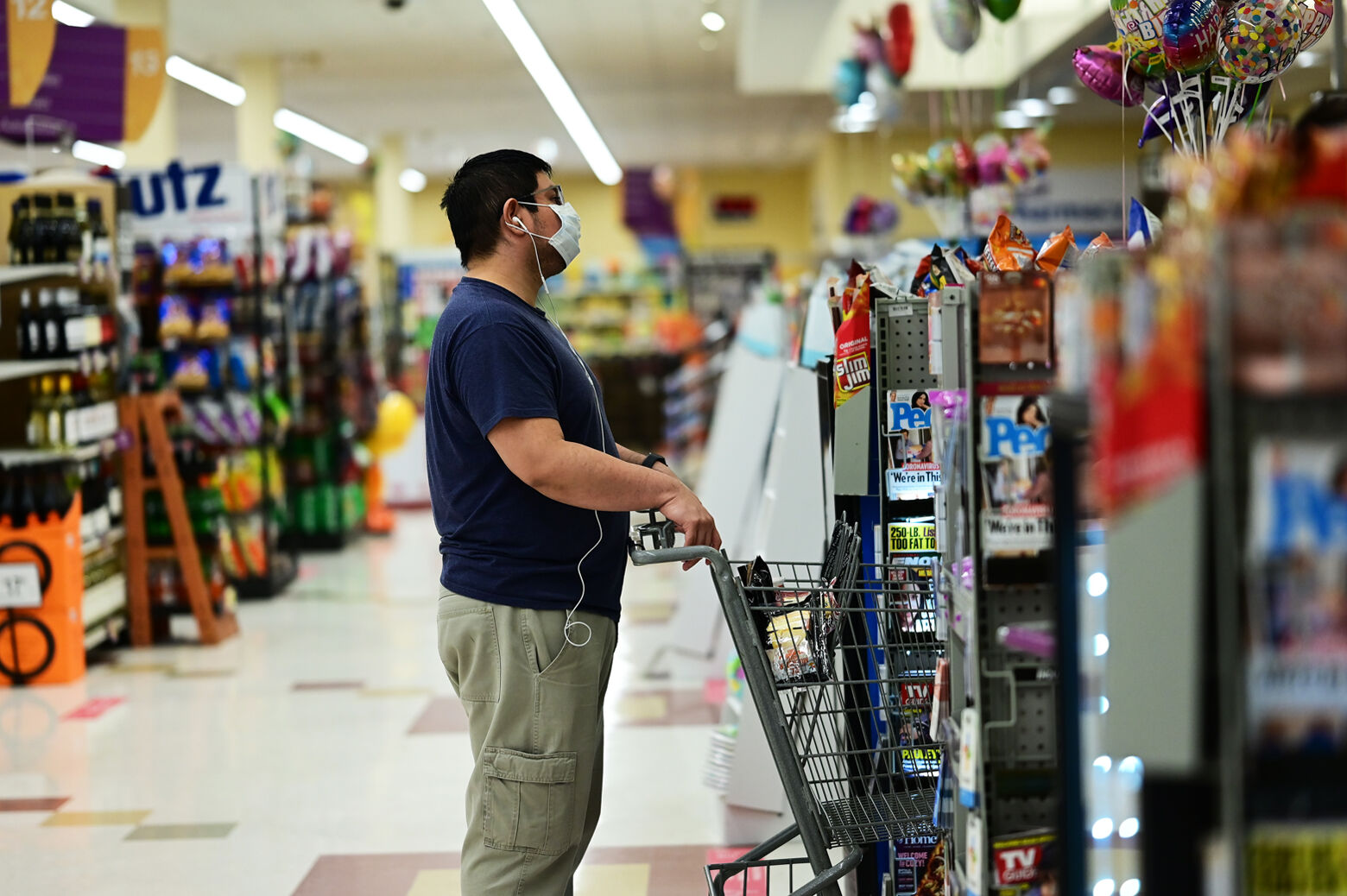
APRIL 15, 2020
Maryland Gov. Larry Hogan issued an executive order requiring customers to wear face masks or face coverings inside grocery stores and other retailers throughout the state and on any form of public transportation.
In D.C., Mayor Muriel Bowser extended a series of social distancing measures, including a stay-at-home order, the closure of nonessential businesses and public schools, and a ban on large public gatherings through May 15. Those measures were originally set to expire April 24.
And in Virginia, Gov. Ralph Northam extended an executive order closing recreation and entertainment businesses and banning large gatherings until May 8.
The news came as the region marked its deadliest two days of the pandemic, up to that point. Maryland, alone, recorded 40 deaths on each of those two days. All told, the coronavirus had claimed more than 616 lives in D.C., Maryland and Virginia, and the number of total infections stood at more than 18,700.
APRIL 17, 2020
In D.C., Mayor Muriel Bowser announced that students would not return to classrooms, and the school year would end three weeks early.
APRIL 19, 2020

Caravans of protesters under the banner “Reopen Maryland” gathered near the statehouse in Annapolis to protest the closing of business, churches and schools.
Similar groups of protesters would also gather in Richmond, Virginia, April 22, when the General Assembly met for an unprecedented outdoor session.
APRIL 20, 2020
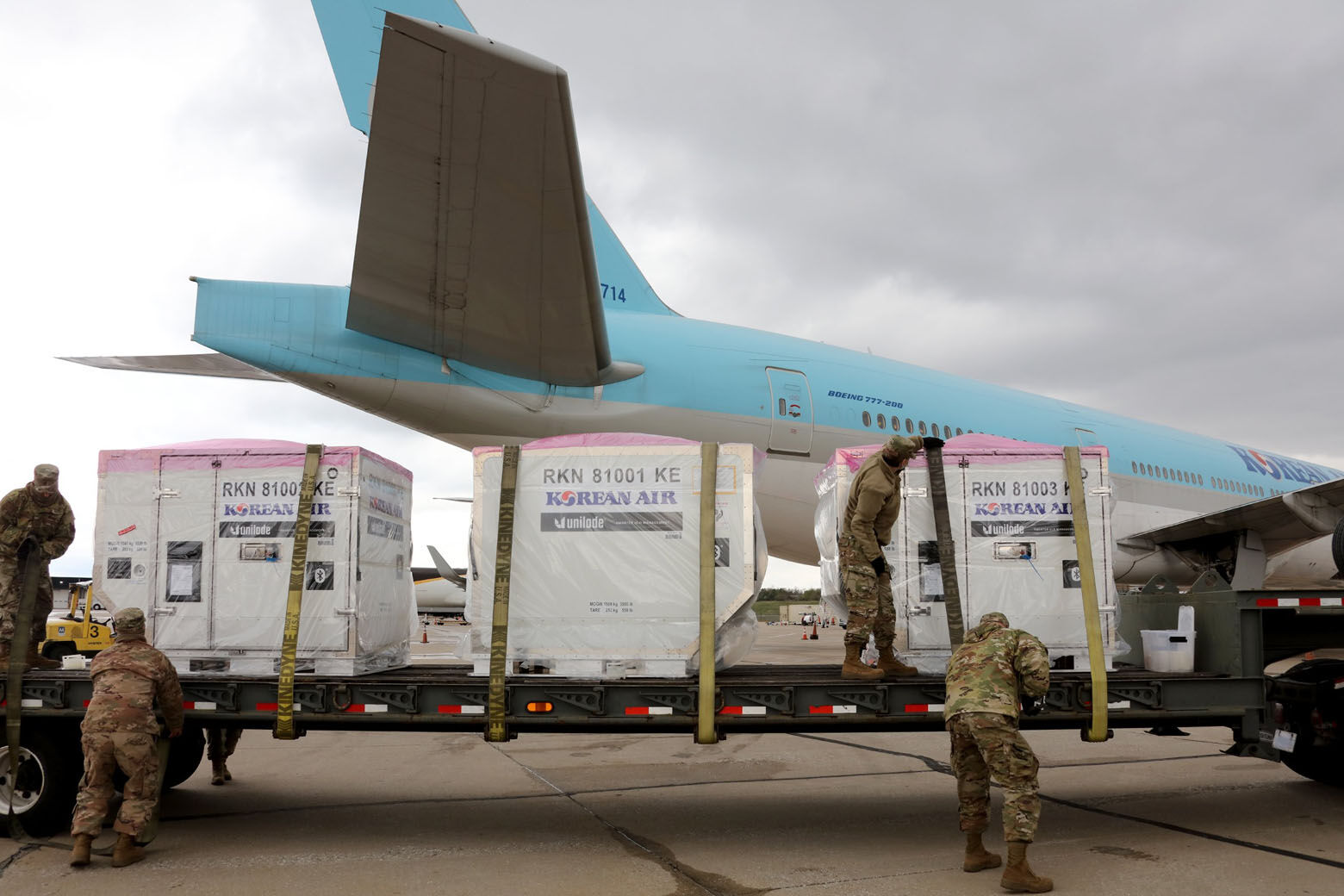
The state of Maryland acquired 500,000 new COVID-19 tests from a South Korean health care company after weeks of complicated negotiations that were spearheaded by Maryland Gov. Larry Hogan and first lady Yumi Hogan.
Hogan called the $9 million purchase “game-changing” and said it would significantly ramp up the state’s testing capacity. The much-heralded tests would later come under scrutiny, and a state health official admitted the first batch of tests did not work properly and had to be returned.
APRIL 21, 2020
D.C., Maryland, and Virginia region marked a grim milestone with number of coronavirus deaths reaching more than 1,000. The number of infections topped 26,000.
APRIL 24, 2020

Maryland Gov. Larry Hogan unveiled a three-stage plan for gradually easing coronavirus restrictions in the state, including the stay-at-home order he issued in late March.
The governor said he was hopeful the state could begin easing some of the restrictions listed in the first stage by early May, but it would depend on whether hospitalizations and deaths continued to decline.
APRIL 29, 2020
Maryland Gov. Larry Hogan issued an executive order requiring that all residents and staff members at nursing homes around the state be tested for the coronavirus, regardless of whether they show symptoms.
MAY 1, 2020
By the late spring, the surge in cases had filled up hospital beds around the region and within just 10 days, the number of deaths across D.C., Maryland and Virginia had doubled, to more than 2,000. At that point, there were 45,000 total cases in the region.
MAY 4, 2020

Virginia Gov. Ralph Northam said the commonwealth would be ready to begin reopening some businesses, such as barbershops and restaurants, May 15 as part of the first phase of the state’s coronavirus recovery plan.
Under the first phase of the reopening plan, gyms, restaurants and retail shops could reopen but with lower capacities.
At the time, there were more than 51,000 total cases and more than 2,200 deaths across D.C., Maryland and Virginia.
MAY 6, 2020
Education officials in Maryland announced schools in the state would remain closed for the rest of the school year.
By this point, there were more than 54,000 cases and nearly 2,500 deaths across D.C., Maryland and Virginia.
MAY 11, 2020
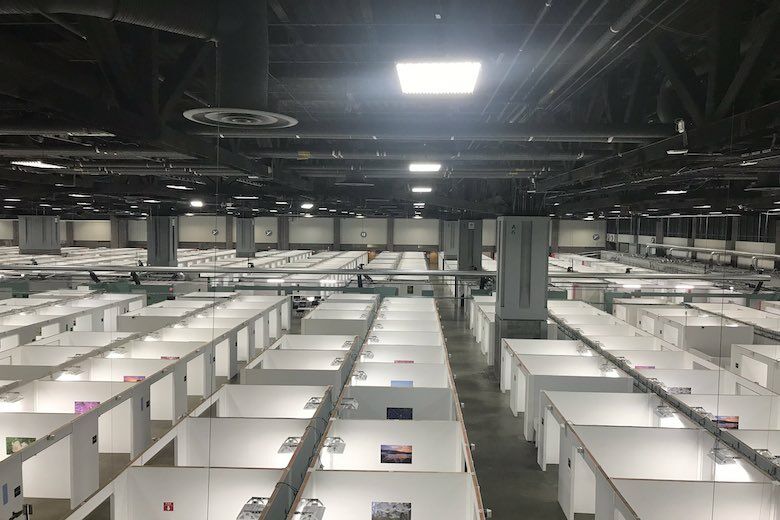
D.C. Mayor Muriel Bowser and other District officials opened the Washington Convention Center as an alternate care site. It took the Army Corps of Engineers about three weeks to transform the convention center into a 437-bed field hospital. Starting May 11, it was able to accommodate 100 patients. But Bowser said the facility was more like the District’s “insurance policy” in case hospitals faced an influx of coronavirus patients.
“We hope that we will never have to use it, but it is here and staffed for when we do or if we do,” she said.
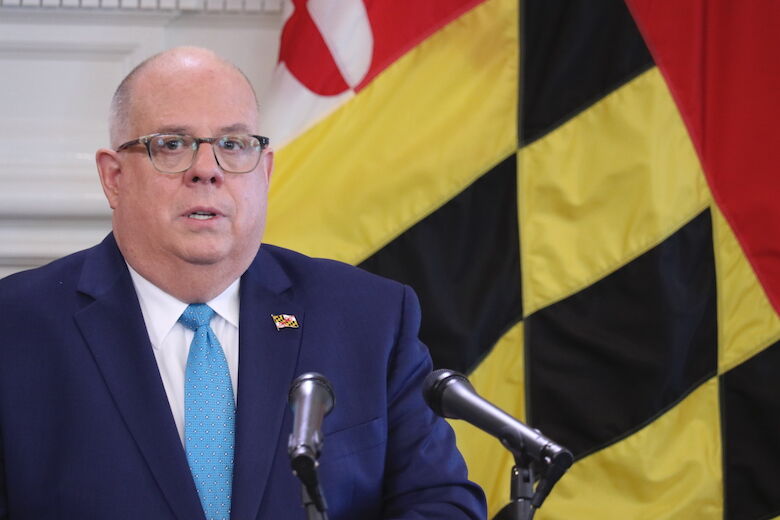
MAY 15, 2020
Maryland Gov. Larry Hogan lifted the state’s stay-at-home order, and officially moved the state into Phase One of its coronavirus recovery plan.
Under the first phase, retail businesses in the state could reopen at 50% capacity, as well as barbershops and hair salons. However, restaurants, movie theaters and gyms remained closed.
The governor allowed local jurisdictions to delay their moves into Phase One, and Montgomery and Prince George’s counties — the two largest in Maryland — did so.
Meanwhile, Virginia also entered Phase One of its recovery plan on May 15.
MAY 29, 2020
Virginia Gov. Ralph Northam, who had been urging residents to wear masks in public but had not issued an order requiring them, finally did so May 29. The move came after he was seen interacting with well-wishers in Virginia Beach over the Memorial Day weekend.
In D.C., Mayor Muriel Bowser lifted the District’s stay-at-home order as the city entered Phase One of its coronavirus recovery plan. Under the plan, restaurants were allowed to reopen for outdoor dining, and nonessential retailers were allowed to reopen for curbside pickup.
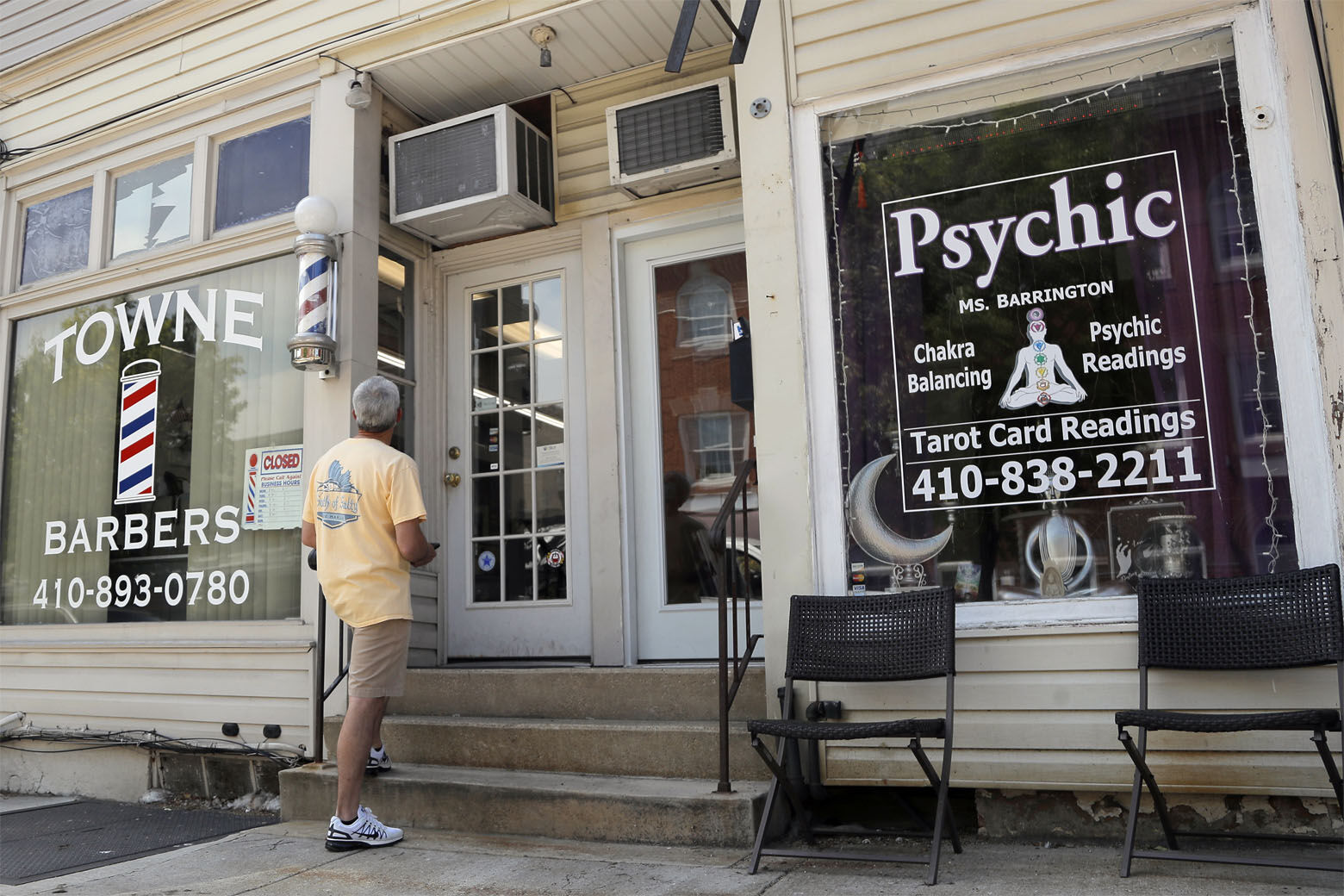
JUNE 5, 2020
Maryland gave the OK to a host of nonessential businesses to reopen, including retails shops, bank branches and houses of worship. It was part of the state’s Phase Two plan unveiled by Gov. Larry Hogan.
However, as with the lifting of Phase One restrictions, Hogan allowed local leaders to lift their own restrictions more slowly than the state guidelines. Leaders in both Prince George’s and Montgomery counties announced their counties would remain in Phase One.
JUNE 15, 2020
In Prince George’s County, officials announced the county was moving to what they called a “modified” Phase Two plan. Under the plan, retailers, hair salons and restaurants could all reopen indoor service with capacity limits.
The county’s transition to a full Phase Two plan didn’t come until June 25.
JUNE 19, 2020
Montgomery County officially entered its Phase Two recovery plan. In Phase Two, restaurants could restart indoor dining limited to 50% capacity and resume limited indoor services at houses of worship, among other changes.
JUNE 22, 2020
D.C. moved into Phase Two of its coronavirus recovery plan. Under Phase Two, a host of activities resumed, including indoor dining at 50% capacity, indoor shopping at nonessential businesses, and the reopening of parks and gyms with safety restrictions.
JUNE 26, 2020
Maryland Gov. Larry Hogan announced a “safe and phased” reopening plan for assisted living facilities in the state, which required universal screenings and face coverings for staff and visitors, mandated widespread testing and allowed for limited visitation.

JULY 1, 2020
Virginia relaxed even more restrictions, moving into Phase Three of its coronavirus recovery plan, which lifted capacity caps on nonessential retail and restaurants, and allowed entertainment venues to reopen at 50% capacity.
JULY 21, 2020
Large school systems in Maryland and Virginia — including Montgomery County Public Schools and Fairfax County Public Schools — announced plans begin the school year with students remaining out of the classroom and conducted classes entirely online.
Earlier, U.S. Education Secretary Betsy DeVos criticized Fairfax County’s earlier plan for a hybrid in-person and virtual model, saying “schools must fully open, and they must be fully operational.”

JULY 22, 2020
D.C. Mayor Muriel Bowser issued stricter rules for mask-wearing in the District, essentially requiring people to wear masks anytime they’re in public.
A few days later, D.C. issued an order requiring people coming to the District from “high-risk” areas after nonessential travel to self-quarantine for 14 days.
The measure came amid a rise in coronavirus cases across large parts of the U.S., including in the South, the Midwest and the West.
In the D.C. region, the pace of new infections and deaths showed evidence of slowing over the summer. The total number of cases in D.C., Maryland and Virginia toped 172,000 and the number of people who had died stood at 6,036.
JULY 29, 2020
The U.S. marked another grim milestone in the pandemic, with 150,000 lives lost to the virus.
JULY 30, 2020

Maryland Gov. Larry Hogan announced stricter mask rules in the state.
Under the new order, which went into effect July 30 at 5 p.m., face masks are required inside public buildings and at outdoor events if it is not possible to maintain a safe physical distance of 6 feet between individuals.
Previously, face coverings were only required inside retailers and on public transportation.
Meanwhile, officials with D.C. Public Schools announced public schools in the District would have an all-virtual start to the coming school year.
JULY 31, 2020
An extra $600 a month unemployment boost and other measures for workers impacted by the coronavirus pandemic that had been negotiated by Congress as part of the CARES Act in March expired.
There was no immediate replacement, and congressional leaders and the White House remained far apart from a deal on further COVID-19 relief measures.
Aug. 25, 2020
Months after beginning Phase 2 of their reopening plan, D.C. announced that they will likely remain there for months before moving into Phase 3. The city remains in a modified Phase 2 as of late December 2020.
Sept. 2, 2020
After showing progress in the state’s battle against the virus, Maryland Gov. Larry Hogan announced that Maryland was ready to enter Phase 3 of the state’s reopening plan.
Sept. 25, 2020
Virginia Gov. Ralph Northam and his wife, Pamela Northam, tested positive for COVID-19. Both made full recoveries.
Oct. 2, 2020

In news that sent shock waves around the world, President Donald Trump announced that he and first lady Melania Trump have tested positive for COVID-19.
Both would go on to make full recoveries, but Mr. Trump spent several days receiving experimental treatment at Walter Reed National Military Medical Center before returning to the White House.
Nov. 3, 2020
The 2020 Presidential Election is held in the United States. Americans everywhere turn out to vote, though many opted to do their civic duty via mail in ballot or voted early because of the pandemic. Former Vice President Joe Biden, who had sharply criticized Trump’s was declared the victor after a longer than usual period of voting.
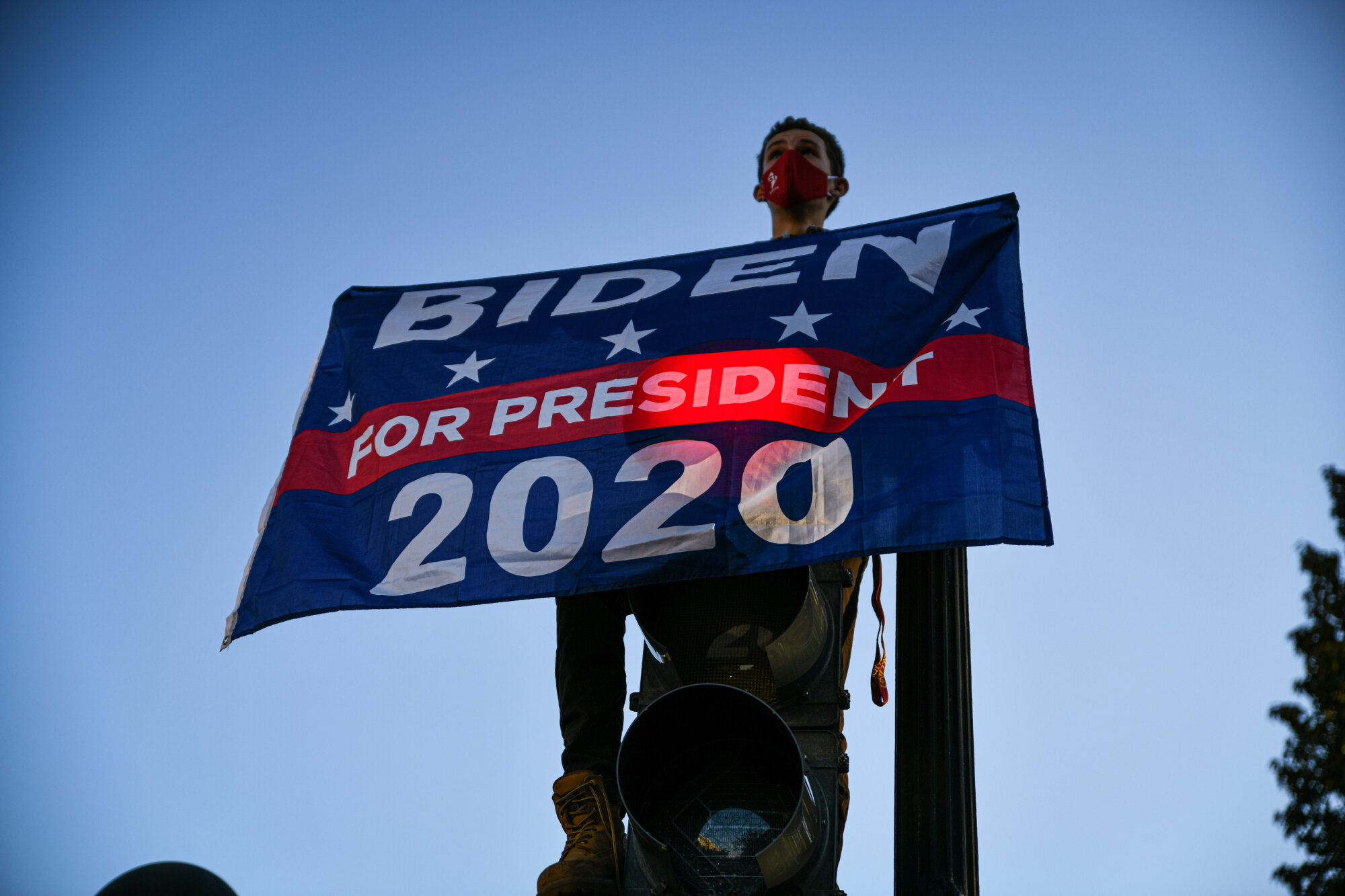
Nov. 5, 2020
After a summer and early fall season where cases and deaths had been trending downward, COVID-19 infections begin surging around the region.
Maryland renewed its travel advisories as cases surge around the country.
D.C. requires visitors to the city to be tested for COVID-19 before being allowed to stay in the District.
Nov. 9, 2020
The United States passed 10 million confirmed cases of COVID-19.
Housing and Urban Development Secretary Ben Carson joined the growing list of officials who tested positive for COVID-19.
Nov. 10, 2020
In an announcement hailed as good news amid a renewed surging of the virus, Pfizer announced that its COVID-19 vaccine is 90% effective.
The company immediately went about readying itself to distribute the COVID-19 vaccine ahead of approval from the U.S. government. Dr. Anthony Fauci estimated that the vaccine would be available to most Americans who wanted one by April 2021 — a hopeful estimate later pushed back to sometime in the summer.
Nov. 23, 2020
D.C. Mayor Muriel Bowser placed heightened restrictions on the city’s Phase Two reopening plan in an effort to curb the spread of the virus ahead of the winter months. Smithsonian museums and the National Zoo, which had welcomed back visitors in limited capacities over the summer
Maryland Gov. Larry Hogan urged Marylanders to be cautious during the winter months and urged residents to wear their masks, equating those refusing to wear masks to drunk drivers.

Nov. 26, 2020
Thanksgiving in the U.S., typically a time to gather with family, arrived even as U.S. health officials pleaded with Americans to avoid Thanksgiving travel.
The D.C. region headed into the holiday with coronavirus cases soaring.
Later, health officials would see a surge in cases linked to the holiday.
Dec. 4, 2020
The CDC issued its strongest guidance on wearing masks yet, calling for “universal mask wearing” during all activity outside one’s home. The federal guidance came months after authorities in the D.C. area issued similar rules.
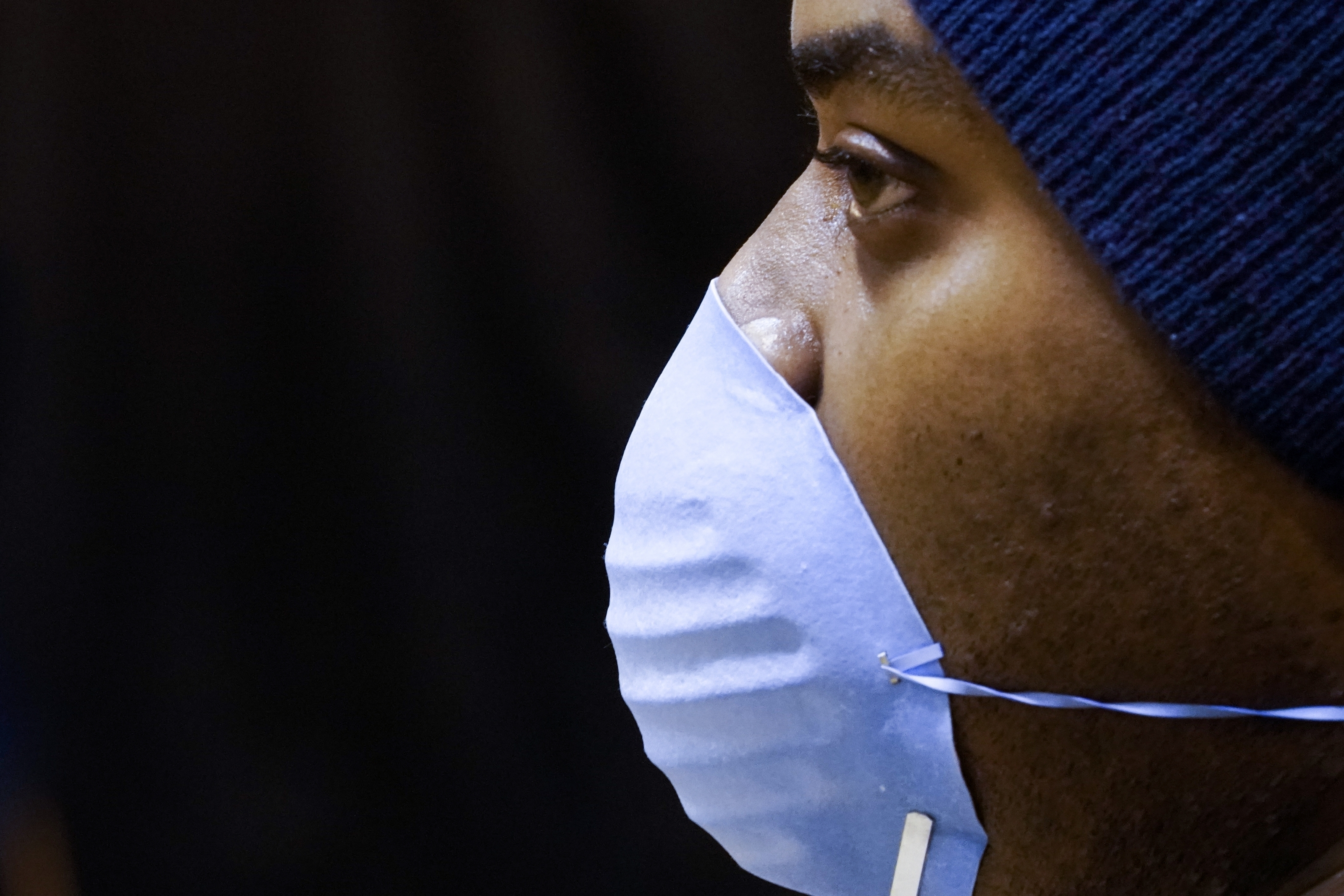
Dec. 11, 2020
The Food and Drug Administration authorized an emergency rollout of a vaccine developed by Pfizer and BioNTech. In a still-unfinished study of nearly 44,000 people, the FDA found the vaccine was safe and more than 90% effective, providing hope a large-scale vaccination could be the beginning of the end of the outbreak.
The news came after the broader D.C. region marked a grim milestone as the total number of lives lost to the reached more than 10,000 in D.C., Maryland and Virginia. Overall, the total number of cases stood at more than 520,000.
Dec. 14, 2020
Officials in the D.C. area put into place a host of new measures designed to curb spiking coronavirus case.
In Virginia, Gov. Ralph Northam ordered a nightly curfew — from midnight to 5 a.m. “If you don’t need to go out, go home,” Northam said at a news conference.
Leaders of Montgomery County and Prince George’s County in Maryland — among the hardest hit jurisdictions in the state — went even further, temporarily clamping down on indoor dining entirely for the next month. A few days later, D.C. did the same.
Nationwide, the number of COVID-19 deaths in the U.S. topped 300,000 just as the first vaccinations around the county began to get underway.
Dec. 17, 2020
As continues and hospitalizations continued surging across the region, Maryland Gov. Larry Hogan issued a new order limiting travel to essential purposes and requiring any Marylanders who travel outside the state to get a negative COVID-19 test result or self-quarantine.
In D.C. five members of the D.C. Fire and EMS Department become the first five city employees to receive the coronavirus vaccine.
The Food and Drug Administration gave the green light to the second COVID-19 vaccine, this one created by pharmaceutical company Moderna.
Dec. 21, 2020

After months of gridlock, Congress reaches an agreement to fund the government and offer $900 billion in economic relief for people and businesses impacted by the pandemic.
Then President-elect Joe Biden receives the vaccine for COVID-19.
Jan. 1, 2021
2020 concluded, and a new year was greeted with mostly muted New Year’s celebrations as pandemic restrictions kept crowds at bay.
Jan. 12, 2021
As a massive vaccination campaign got underway and began to offer hope, another potential threat loomed: Concerning variants of the coronavirus — different strains that were first identified in the U.K., Brazil and South Africa — appeared to be more transmissible versions of the virus. Experts said it didn’t appear the variants were more deadly. Maryland Gov. Larry Hogan announced Jan. 12 the first known cases of the variant first identified in the U.K. involving a Maryland couple.
Jan. 14, 2021
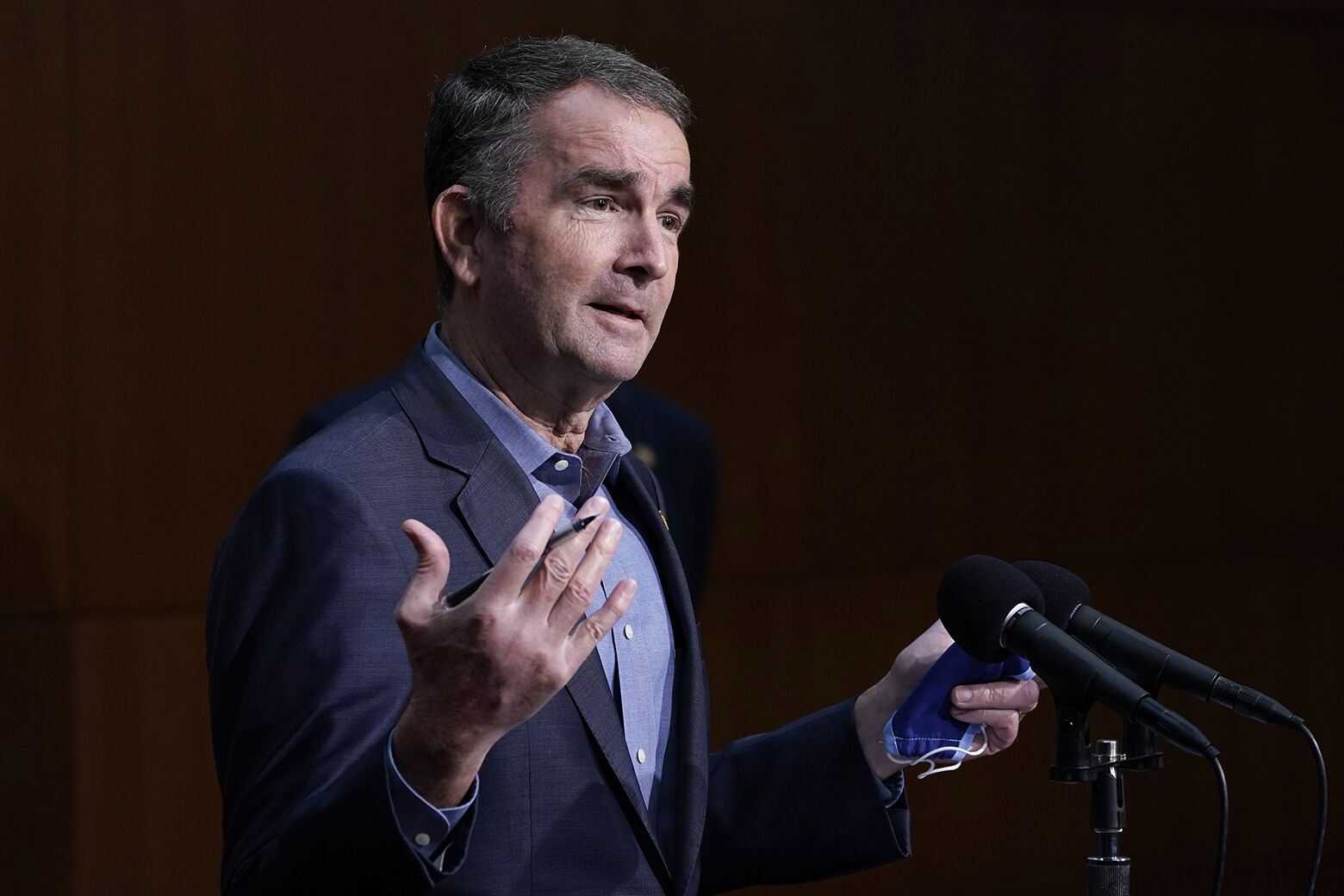
Virginia Gov. Ralph Northam expanded eligibility for the new coronavirus vaccines to state residents 65 and older. The move made about half of Virginia’s 8.5 million residents eligible for the shots.
Jan. 18, 2021
Maryland moved to expand access to the vaccines to the oldest residents of the state — those 75 and older. But a very limited supply of the shots quickly led to frustration as people sought to snag scarce appointments.
The following week, Maryland expanded eligibility to residents 65 and older and other categories of essential workers. All told, that expanded eligibility to some 2 million Marylanders, but the supply of vaccine doses from the federal government at the time totaled only about 72,000 first doses.
That same day, Hogan rolled up his sleeve for a shot of the Moderna COVID-19 vaccine. “I feel I could drop and give 100 pushups,” he joked after receiving the Moderna shot.
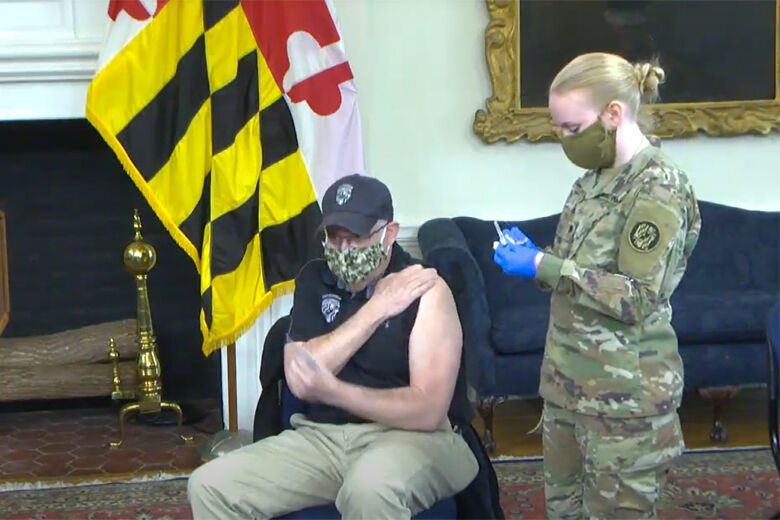
Jan. 20, 2021
President Joe Biden took the oath of office in an unprecedented Capitol Hill ceremony under tight security and with a smaller, socially distanced crowd. (The ceremony came two weeks after the storming of the U.S. Capitol by pro-Trump rioters). Leading up to the inauguration, Biden had pledged to get 100 million COVID-19 vaccine shots in people’s arms by the end of his first 100 days in office — April 30.
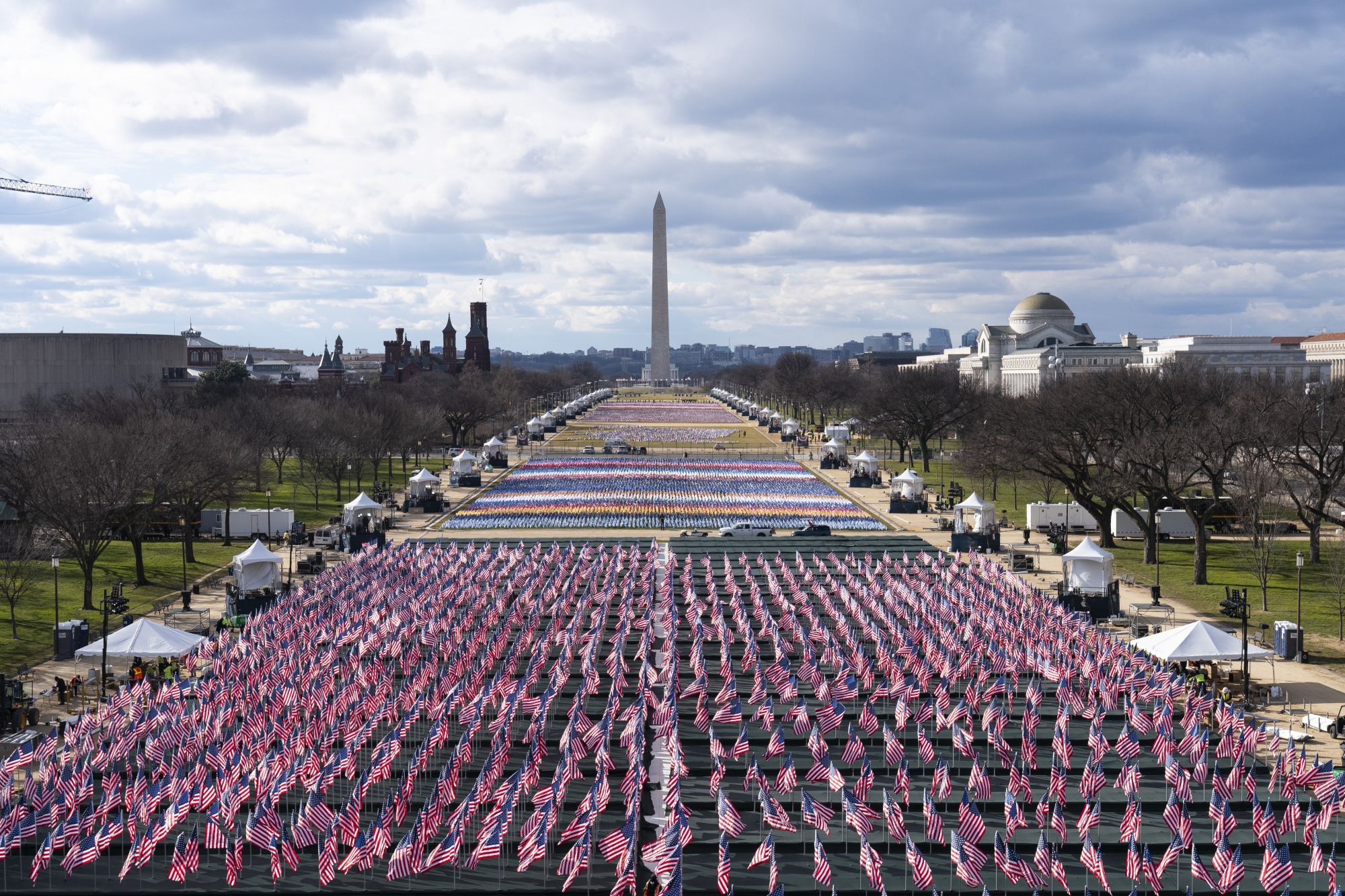
Jan. 30, 2021
Maryland authorities announce the first known cases in the state of the more transmissible South African COVID-19 strain. A few days later, two more Marylanders — residents of Montgomery County — were also confirmed to have the variant.
Feb. 5, 2021
The first of six planned mass vaccination sites across the state opened in Maryland at the Six Flags theme park in Prince George’s County. At full capacity, the site can do 6,000 shots a day, but doses were extremely limited to start with. Later, questions would arise about equity and fair distribution of the vaccine given the low numbers of Prince George’s County residents able to access shots at the site.
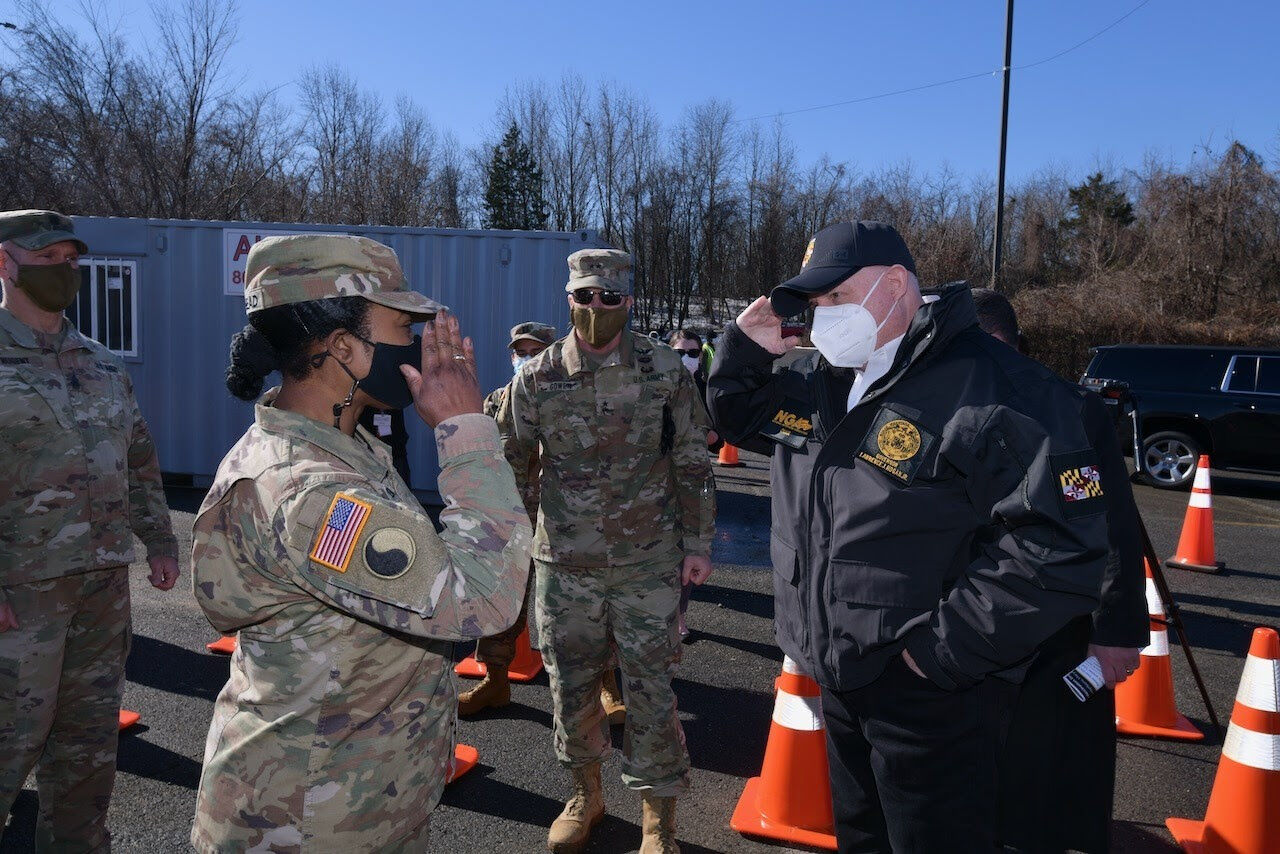
Feb. 14, 2021
With coronavirus infections on the decline across the D.C. region, limits on indoor dining, among other restrictions, were lifted. Montgomery County, Maryland, the last county in Maryland — and the last in the D.C. area — allowed indoor dining to restart Feb. 14 with a limited capacity.
Feb. 16, 2021
Small groups of students returned to in-person learning in two of the largest school systems in Northern Virginia — in Fairfax and Loudoun counties.
Feb. 22, 2021
The COVID-19 death toll in the U.S. topped 500,000, a staggering number that all but matches the number of Americans killed in World War II, Korea and Vietnam combined.
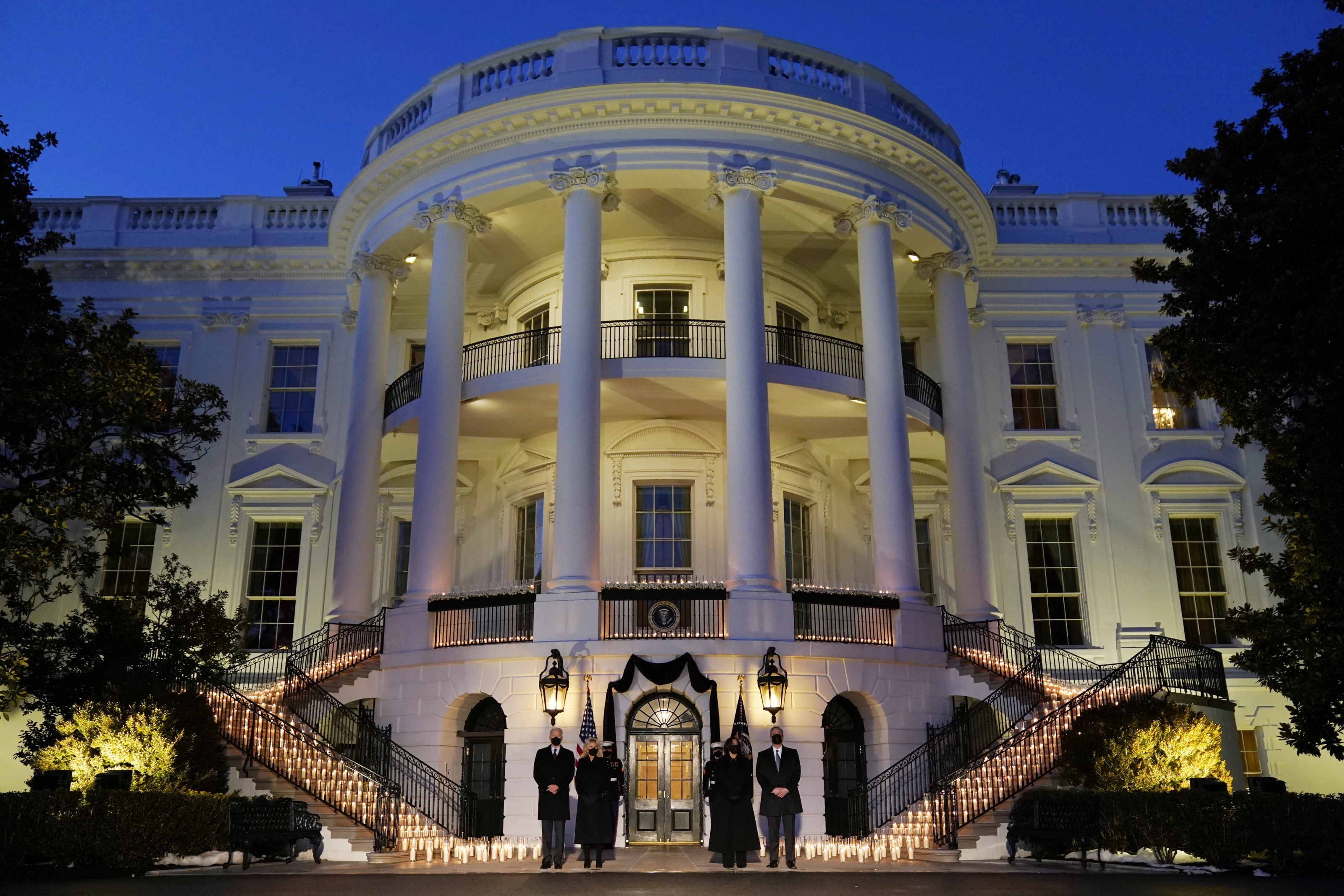
Feb. 23, 2021
Maryland health officials announced they were increasing the screening and genetic sequencing of coronavirus tests to identify variants of concern. By this time, Maryland Deputy Health Secretary Dr. Jinlene Chan said about 60 cases involving variants had been identified, the majority being the strain first identified in the U.K.
Feb. 24, 2021
D.C. Mayor Muriel Bowser announced her sister, Mercia Bowser, died from COVID-19 complications. It had not been publicly known Mercia Bowser had contracted the virus or was ill. Her sister “joins the legion of angels who have gone home too soon due to the pandemic,” the mayor said in a statement.
Just a few days before, the District marked more than 1,000 deaths from the virus.
Feb. 27, 2021
The Food and Drug Administration authorized a third coronavirus vaccine for use, the Johnson & Johnson shot that requires just one shot instead of two.
The FDA said the vaccine offers strong protection against serious illness, hospitalizations and death. The single dose was 85% protective against the most severe COVID-19 illness, in a massive study that included South Africa, where the variants of most concern are spreading. In just a matter of days, shipments of the new vaccine doses — 69,000 in Virginia; more than 49,000 in Maryland; and 6,000 doses in D.C. — start arriving in the D.C. area.
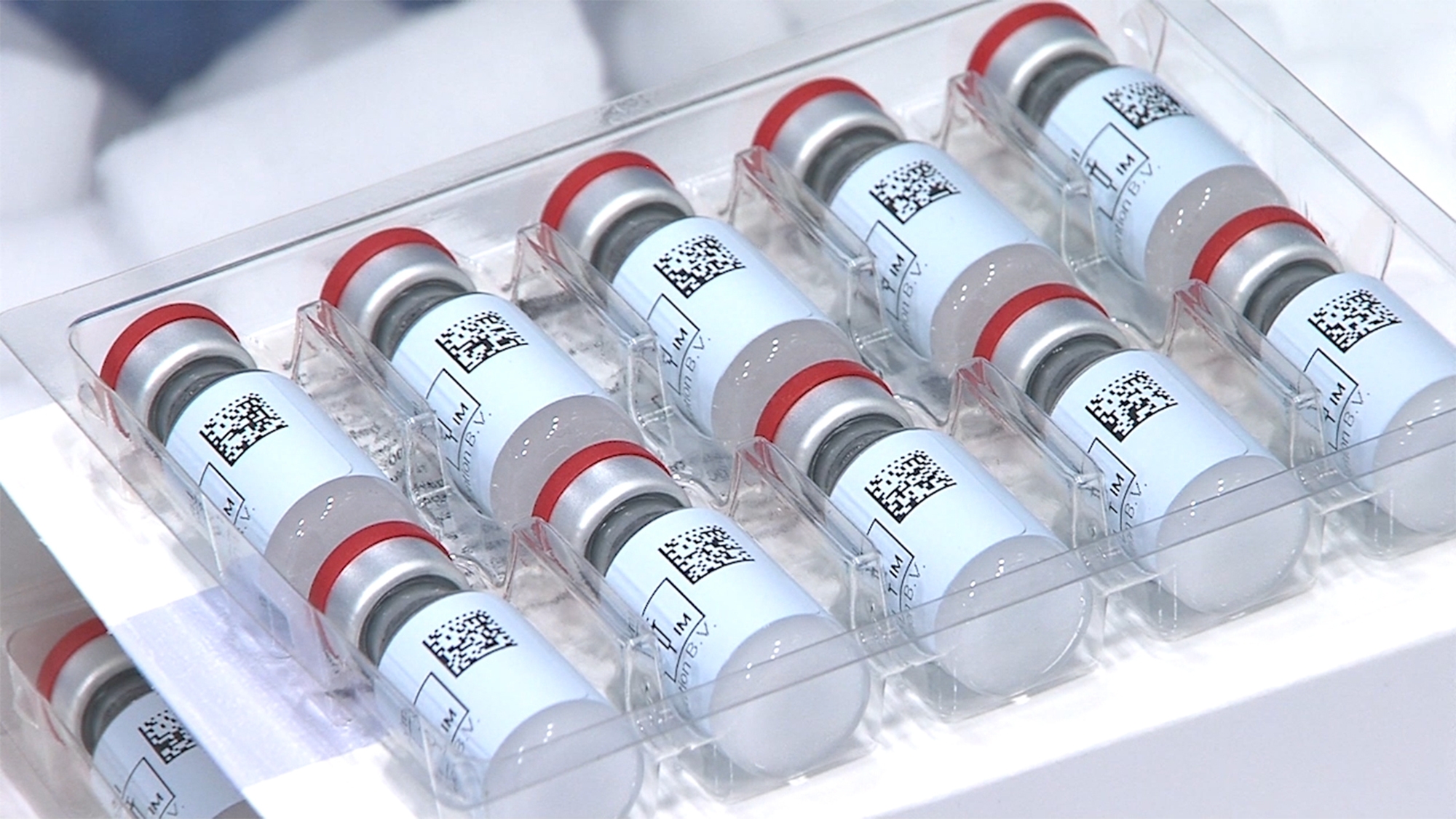
March 1, 2021
The broader D.C. region — the District, Maryland and Virginia — marked a sober milestone, surpassing 1 million total coronavirus infections since the start of the pandemic. That same day marked more than 17,600 deaths across the region. The grim milestone came with hope that, after a rocky start, the distribution of vaccines in the region, and around the country, was finally starting to speed up. Just a few days before, President Joe Biden announced the U.S. had administered 50 million shots — half of the 100 million goal — in just the first 37 days of his administration.
Meanwhile, the first small groups of students in some of Maryland’s largest school systems — many of whom had been in virtual learning since the start of the pandemic — returned to classrooms. Small groups of students returned in Montgomery, Anne Arundel, Howard, Baltimore and St. Mary’s Counties.
March 2, 2021
President Joe Biden announced the U.S. had secured enough doses of coronavirus vaccines for all adults by the end of May — two months earlier than anticipated. Still, the work of inoculating Americans was expected to extend well into the summer.
Later in an interview with WTOP, infectious disease specialist Dr. Anthony Fauci said the presence of multiple, highly efficacious vaccines was finally providing “light at the end of the tunnel.”
March 5, 2021
The date marked the anniversary of the first COVID-19 cases in the region: Three residents of Montgomery County who had returned form a cruise along the Nile River.
Maryland Gov. Larry Hogan planned to hold a twilight vigil ceremony on the steps of the statehouse in Annapolis to honor the more than 7,900 Marylanders who lost their lives to the pandemic.
WTOP staff and The Association Press contributed to this report.



